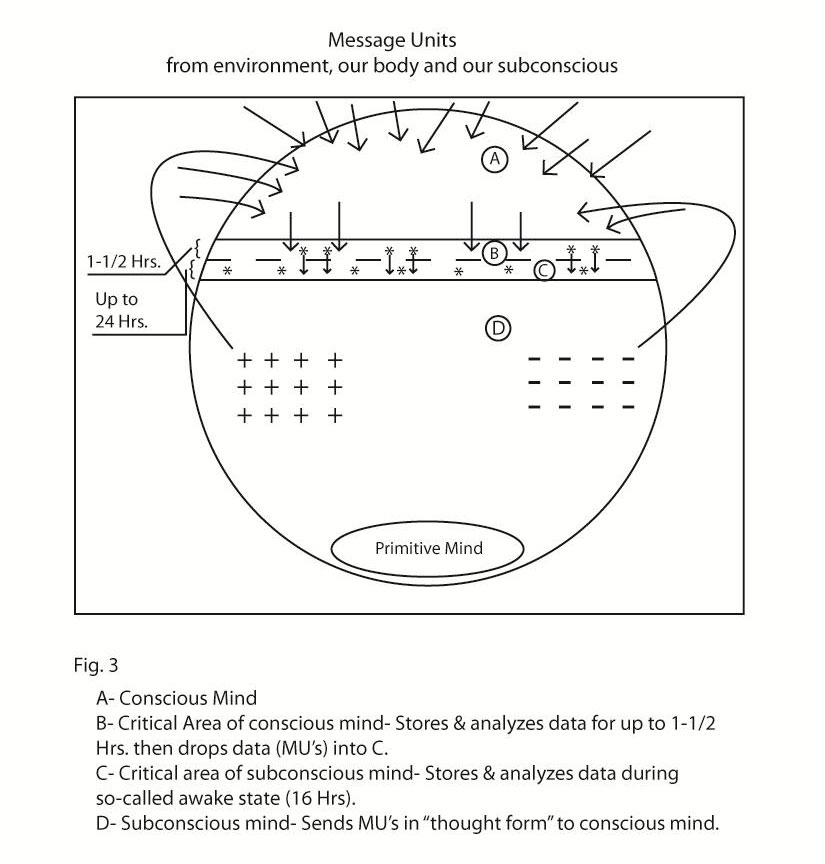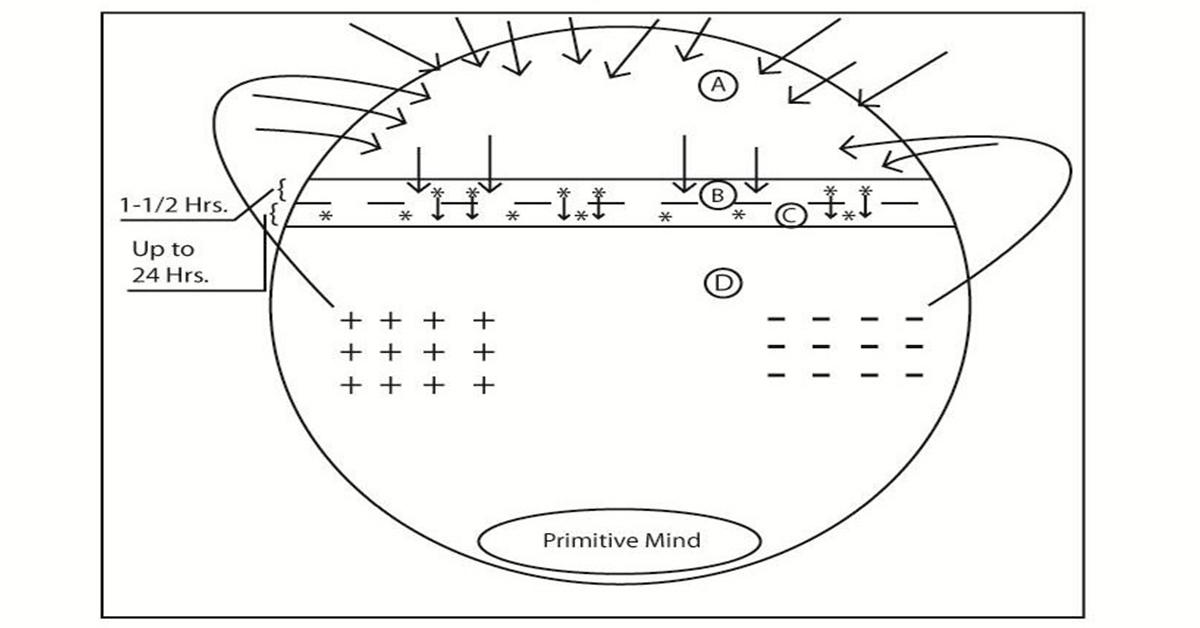How The Mind Creates our Reality
It has been my experience and belief that the source of all our negative life situations and problems come from our Subconscious mind. As the Subconscious mind bubbles- up or sends thoughts to the Conscious mind— our body responds to these thoughts with emotion (energy in motion) and then we act on these emotions, or behave in certain ways. Response to stimuli is one of the seven criteria of life.
These actions or responses to the stimuli of thoughts in our Conscious mind and body are our behaviors. We may respond to thoughts in any number of ways— becoming irritable and angry or we may react with love and compassion. Why is this? Our emotions are responsible for creating our state of mind because we react to these thoughts as if they are real and—we never question where they come from. Worse still— we believe they are who we are. We rarely question the legitimacy of these thoughts and feelings. We either feel good or not so good and often— do not even know or understand why we feel this way or that way. But, this is highly valuable information and is actually a kind of built-in guidance system. It informs us when we have jumped off the track and are heading where we don’t really want to go. These emotions that come from our thoughts can cause us to suffer or cause us to want to celebrate.
The good news here is that while our Subconscious mind is the source of all our problems— it can be re-programmed to be the source of all our joy! You just need to know how.
Figure 3 represents a theory of mind that many hypnotherapists, including myself, use to explain how the mind works, to their clients. The circle represents our total mind and the area at the bottom is known as the Primitive mind.

This is the part of the mind that triggers the fight or flight response when we are under extreme stress or facing a situation where we have to run or fight. Also inside the Primitive mind are two primary fears, the fear of falling and the fear of loud noises.
The Critical mind resides in both the Conscious mind and the Subconscious mind. It has been assumed by hypnotherapists for many years that our Subconscious mind is about ninety percent of our entire mind and the Conscious mind is only approximately ten percent of our entire mind.
Brain scientists (neuroscientists) and researchers are now estimating that our Conscious mind may be only five percent of our total mind! (When you realize that this is where our intellect resides it’s a little humbling, to say the least).
It’s extremely important to understand that our Subconscious mind does not think, nor does it reason or analyze. It uses no logical decision-making whatsoever. It is the Conscious mind or Adult mind that is all about reasoning and analysis, logic, decisions and willpower.
When we were very small, from age zero to eight years old, we took in information like a sponge. We absorbed this information through our five senses, the sense of taste, touch, auditory, visual, and olfactory or smell. All of this information and experiences became our “known” associations and identifications. In other words, the things we know about our world. By about age eight we have a library full of these known associations and identifications and our Critical mind then develops.
The Critical mind acts as a sort of barrier or filter to prevent any more new information or programming into our Subconscious mind without being critically analyzed by our Conscious mind first. We no longer accept any new programming at face value. This is when we begin to question information coming to us and also when we begin to control our state of mind and responses to stimuli or behaviors.
All of this information comes to us mostly from our caretakers (usually mother and father) but between the age of zero and eight there could be several different people who are inputting information and experiences into your life. Siblings, aunts, uncles, grandparents, teachers, preachers, the environment and our own bodies all contribute to our “known” associations and identifications and, these associations and identifications can be positive or negative.
For example—if an older sibling is acting as a surrogate caretaker or is babysitting us quite a bit when we are small and is always telling us that we are stupid, we will have a program(a known identification) that we are—stupid!
Another example could be when you were sitting in church as a child and the minister is telling stories about hellfire and damnation—you may grow up believing that people who don’t belong to your religion are all going to hell.
Butt, many of these known associations and identifications or Subconscious programs can be fairly benign such as— hot weather feels bad or cold weather feels good or— a warm fuzzy blanket feels good and touching a hot stove feels bad but the smell of warm cookies in a hot oven feels good. A puppy dog may be a positive association— unless— as a child— a puppy dog’s mother lashed out and bit you when you had reached out to pet the puppy— then a puppy may be a negative association. So, we have some feel-bad experiences and associations and we have some feel-good experiences and associations.
Where do our thoughts come from?
Our so-called thoughts for the most part, come from our subconscious mind. When any of our subconscious “knowns” are stimulated or active, they send symbols up to our conscious mind which are interpreted as thoughts. Scientists tell us that we have sixty to eighty thousand (yes I said THOUSAND) thoughts a day and most of these, like ninety-five percent are repetitive. These thoughts cause reactions in our bodies that we call emotions.
What’s important to understand is that all of those “known” associations and identifications are like programs that when stimulated they become like mirrors that we see the world with. We hardly ever see the real world and because we do actually create our reality, the world we experience is merely a reflection of what our subconscious programs are directing our attention to. So, if you don’t like what you’re seeing or experiencing then find out how to re-program your subconscious mind. Learn how to use your Mind Gate or critical are properly. I go through all of this in great detail in my book, The MIND GATE Process of Empowerment and also in my workshops.

Dallas September 26, 2014 @ 5:17 pm
I’m interested in learning more on this subject.. I’ll be in touch asap.